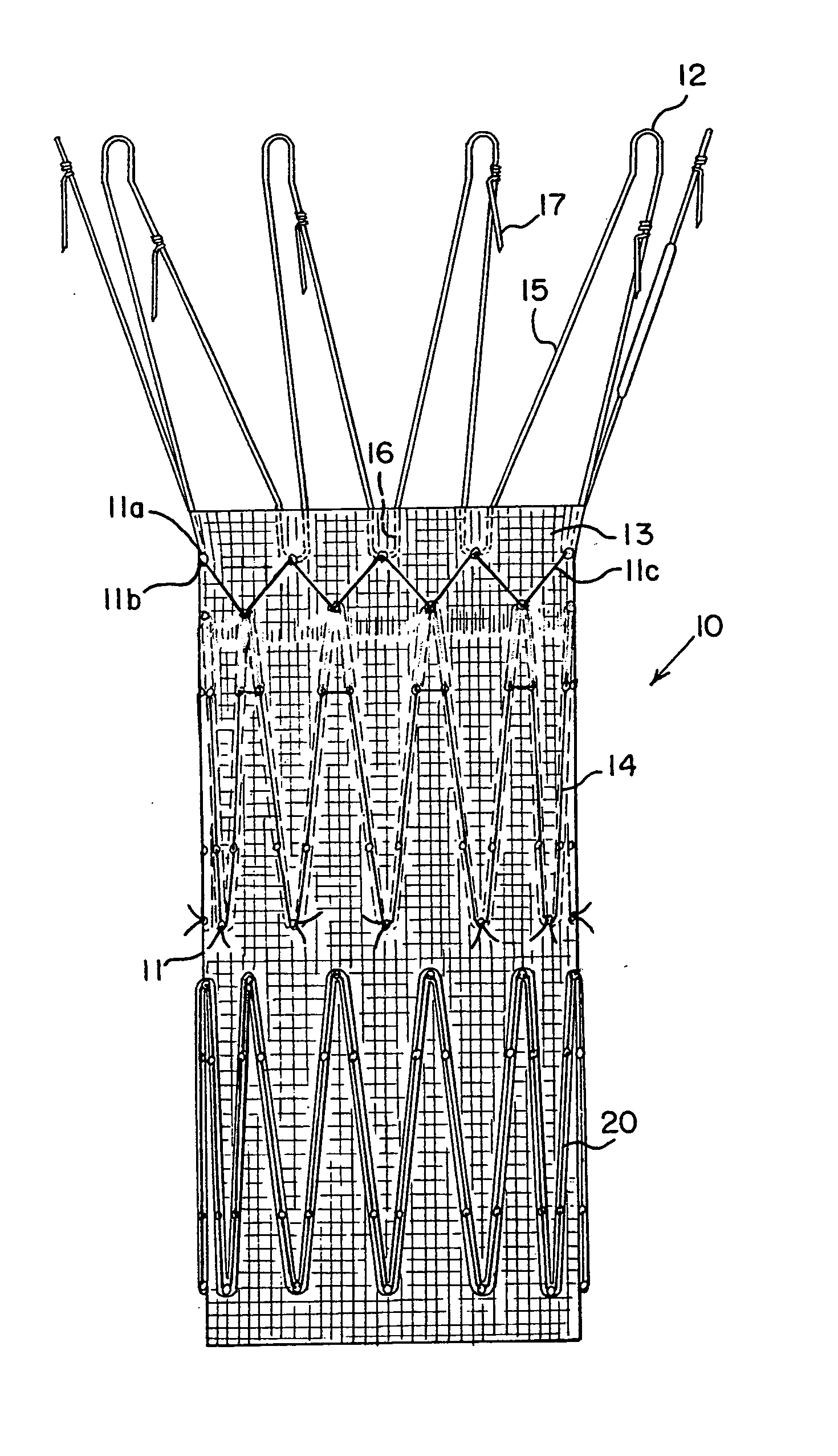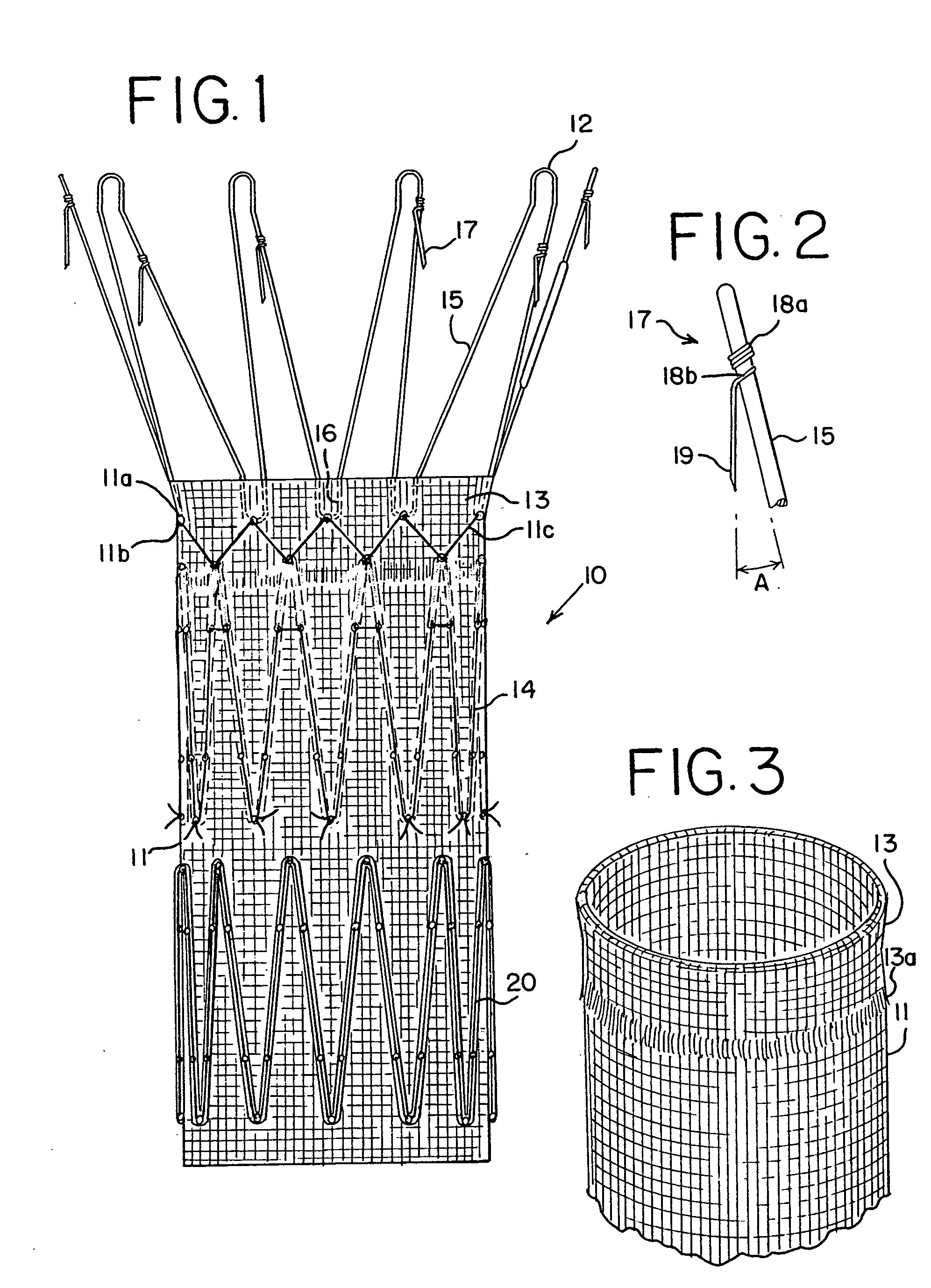Endoluminal prosthetic device
a prosthetic device and endoluminal technology, applied in the field of endoluminal prosthetic devices, can solve the problems of requiring many penetrations per bend of the stent, and affecting the use of endoluminal prostheses
- Summary
- Abstract
- Description
- Claims
- Application Information
AI Technical Summary
Benefits of technology
Problems solved by technology
Method used
Image
Examples
Embodiment Construction
[0019] An endoluminal prosthetic device in accordance with the present disclosure is presented in FIG. 1. The device 10 comprises a graft 11 with a cuff 13, made from polyester or other graft material suitable for use in a human body. These materials may include, but are not limited to, polyester, polyurethane, polyethylene, polypropylene, and polytetrafluoroethylene, as well as other fluorinated polymer products. A preferred material is polyester woven in a twill pattern, and available commercially from Vascutek Ltd. of Scotland. Biomaterials may also be used, such as collagen or ECM (extracellular matrix materials). One example is porcine small intestine submucosa (SIS) material, which may be remodeled into repair tissues for the human body.
[0020] Device 10 also includes at least one anchoring stent 12 and an internal stent 14. These stents may be in the form of zigzag stents, that is, a continuous chain of struts 15 and joints of apices 16. Zigzag stents known by the trademark C...
PUM
 Login to View More
Login to View More Abstract
Description
Claims
Application Information
 Login to View More
Login to View More - R&D
- Intellectual Property
- Life Sciences
- Materials
- Tech Scout
- Unparalleled Data Quality
- Higher Quality Content
- 60% Fewer Hallucinations
Browse by: Latest US Patents, China's latest patents, Technical Efficacy Thesaurus, Application Domain, Technology Topic, Popular Technical Reports.
© 2025 PatSnap. All rights reserved.Legal|Privacy policy|Modern Slavery Act Transparency Statement|Sitemap|About US| Contact US: help@patsnap.com



